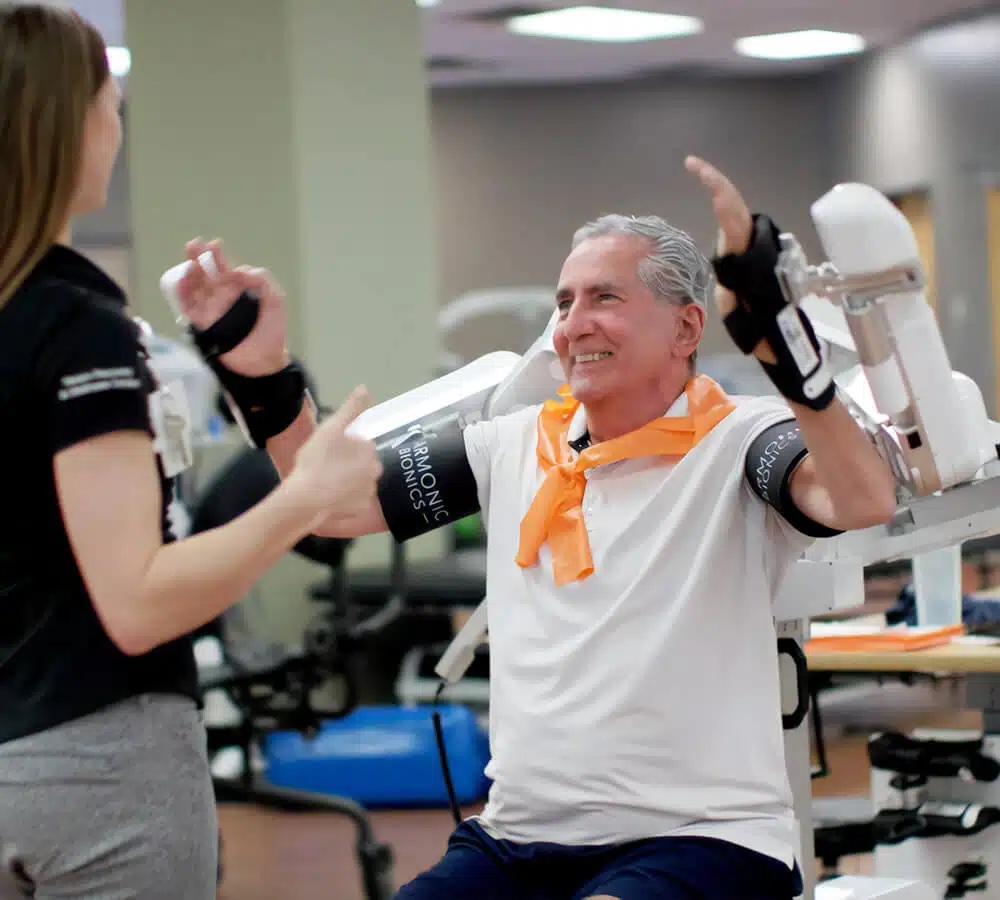Rethinking Rehab: A Founder’s Journey to Build a Better Device

📖 5 min read | #MedTech #SCIInnovation #Rehabilitation
Rethinking Rehab: A Founder’s Journey to Build a Better Device
As a Praxis SCI Accelerate 2023 alumni, Harmonic Bionics gained direct insights from persons with lived experience (PLEX) and SCI clinicians—real-world perspectives that challenged assumptions and informed design decisions. Through the program, they discovered how critical it was to align technology not only with clinical needs, but with the priorities of the SCI community itself.
Before stepping into medical technology, Mark Hunter spent years working in semiconductor engineering—a field driven by innovation but lacking the direct human impact he wanted. The turning point came when one of Harmonic Bionics’ co-founders experienced an upper extremity injury and saw firsthand how limited rehabilitation options were. That’s where the idea for Harmony SHR started, Mark explains. “We saw a gap in rehab technology and wanted to build something that could truly improve patient outcomes.”
The team developed Harmony SHR, a robotic device designed to help patients regain upper extremity mobility after neurological injuries. Their initial focus was on power wheelchair users, thinking that was the biggest accessibility challenge. But when they joined the Praxis SCI Innovation Program, they realized they had more to learn.
What Real-World Feedback Changed
Praxis gave the team direct access to people with lived SCI experience, clinicians, and therapists—a critical step in ensuring their device would work in real-world rehab settings.
Through focus groups and user testing, they uncovered key areas for improvement:
- Better Wheelchair Compatibility – The team adjusted arm positioning and base design to improve usability for patients in tilted and reclining wheelchairs.
- More Flexible Patient Positioning – Instead of limiting the device to one setup, they refined it to work in various rehab environments and postures.
- Stronger Market Positioning – The team shifted from a narrow focus on wheelchair users to a more adaptable, widely applicable device.
“We thought we had the right approach,” Mark says. “But hearing directly from users gave us insights we wouldn’t have gotten otherwise.”
Instead of making these changes after launch, Praxis helped them refine the product early, ensuring it was market-ready without
needing costly revisions.
“We didn’t have to go back and fix things later,” says Kylie, an occupational therapist at Harmonic Bionics. “We were able to make the right changes before going to market.”
Looking Beyond the Clinic: A New Vision
One unexpected takeaway? Patients expressed interest in a wearable, at-home version of the device—something the team hadn’t previously considered.
While Harmony SHR remains focused on clinical rehabilitation, this feedback has already influenced their long-term product vision.
“It wasn’t on our radar before,” says Mark. “But now, we’re asking ourselves: ‘How could we make this work in the future?”
The Praxis Experience for MedTech Founders
Mark’s biggest takeaway from Praxis? Talk to your users—early and often. Many startups make the mistake of building products based on assumptions, only to realize later they don’t fully meet patient needs.
“We’ve seen companies rush to market without talking to their end users,” says Kylie. “That’s how products fail.”
For Harmonic Bionics, Praxis wasn’t just another accelerator—it was a turning point.
“We joke that it felt like six months of free consulting,” Mark adds. “But honestly, the insights were invaluable.”
Now, with a refined product, a clearer strategy, and direct input from real users, Harmonic Bionics is moving forward with confidence— knowing their technology is built for the people who need it most.
About Harmonic Bionics
Harmonic Bionics is a commercial-stage robotics and digital health company that aims to unlock human functional capabilities through robotics. Our flagship product, Harmony SHR®, is a bilateral upper extremity exoskeleton that works with a patient’s scapulohumeral rhythm (SHR) to enable natural, comprehensive arm and shoulder therapy for those living with neurological and musculoskeletal movement impairments.
